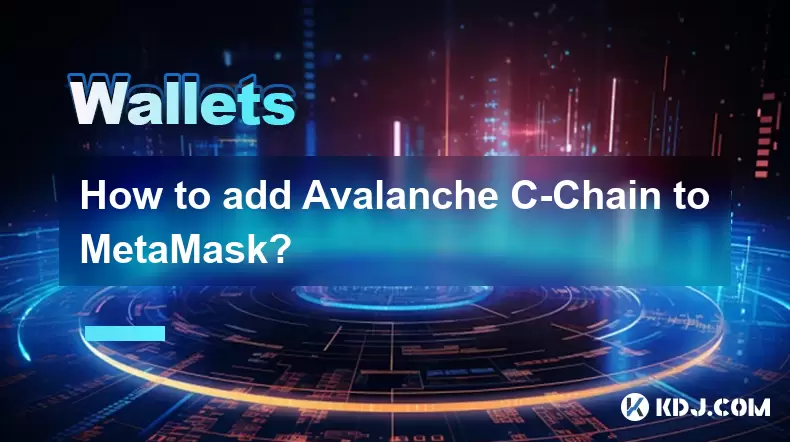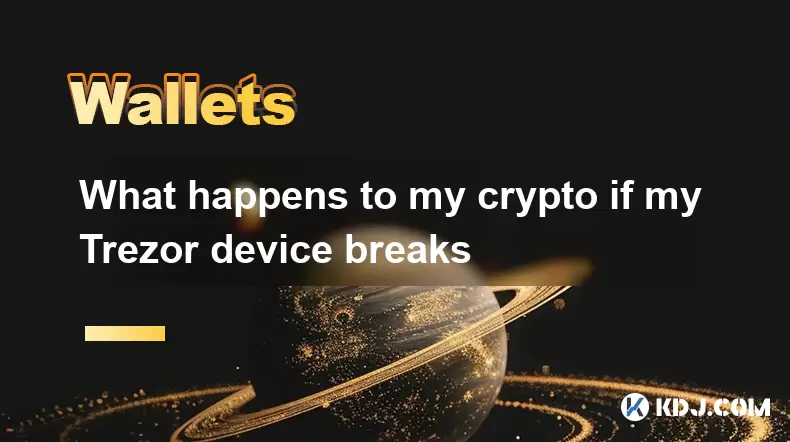-
 Bitcoin
Bitcoin $119,448.2396
0.27% -
 Ethereum
Ethereum $2,992.9919
0.78% -
 XRP
XRP $2.9074
1.58% -
 Tether USDt
Tether USDt $1.0001
0.00% -
 BNB
BNB $687.9097
-0.40% -
 Solana
Solana $161.5804
-0.47% -
 USDC
USDC $0.9998
0.01% -
 Dogecoin
Dogecoin $0.1948
-2.10% -
 TRON
TRON $0.3013
-0.08% -
 Cardano
Cardano $0.7286
-3.16% -
 Hyperliquid
Hyperliquid $47.3153
-3.81% -
 Stellar
Stellar $0.4543
-9.79% -
 Sui
Sui $3.8809
5.63% -
 Chainlink
Chainlink $15.6262
-0.55% -
 Hedera
Hedera $0.2368
-5.31% -
 Bitcoin Cash
Bitcoin Cash $501.2030
-0.80% -
 Avalanche
Avalanche $21.0650
-1.43% -
 UNUS SED LEO
UNUS SED LEO $9.0006
-0.39% -
 Shiba Inu
Shiba Inu $0.0...01310
-1.90% -
 Toncoin
Toncoin $3.0040
1.56% -
 Litecoin
Litecoin $93.8936
-1.20% -
 Monero
Monero $341.8918
1.27% -
 Polkadot
Polkadot $3.9087
-3.05% -
 Uniswap
Uniswap $8.9599
4.78% -
 Dai
Dai $0.9999
0.02% -
 Ethena USDe
Ethena USDe $1.0005
-0.02% -
 Bitget Token
Bitget Token $4.3954
-0.14% -
 Pepe
Pepe $0.0...01207
-2.26% -
 Aave
Aave $314.5223
1.72% -
 Bittensor
Bittensor $408.6988
2.76%
How to add Avalanche C-Chain to MetaMask?
Add the Avalanche C-Chain to MetaMask for seamless access to DeFi, NFTs, and dApps on Avalanche's EVM-compatible network.
Jul 15, 2025 at 03:08 pm

What is Avalanche C-Chain?
The Avalanche C-Chain (Contract Chain) is one of the three primary chains in the Avalanche ecosystem, alongside the X-Chain and P-Chain. The C-Chain specifically supports Ethereum-compatible smart contracts, making it a popular choice for developers transitioning from Ethereum to Avalanche. It allows users to deploy decentralized applications (dApps), interact with tokens, and execute transactions using the Ethereum Virtual Machine (EVM).
Since MetaMask is also EVM-compatible, integrating the Avalanche C-Chain into your wallet enables seamless interaction with Avalanche-based dApps. Before proceeding with adding the network, ensure that you are familiar with the basic functions of MetaMask, including managing networks and handling custom RPC settings.
Why Add Avalanche C-Chain to MetaMask?
Integrating Avalanche C-Chain into MetaMask provides access to a wide array of decentralized finance (DeFi) platforms, NFT marketplaces, and other blockchain tools built on Avalanche. Unlike some wallets that natively support Avalanche, MetaMask requires manual configuration to recognize the C-Chain network.
By completing this setup, you gain the ability to send and receive AVAX tokens, participate in yield farming, stake assets, or explore new projects without switching between multiple wallets. This flexibility makes the integration highly beneficial for users who prefer MetaMask’s interface and security features while engaging with Avalanche-based protocols.
Preparing Your MetaMask Wallet
Before adding the Avalanche C-Chain, make sure you have the latest version of MetaMask installed as either a browser extension or mobile app. Ensure that your wallet is already set up with a recovery phrase and password. If not, follow the initial setup process before proceeding.
Open MetaMask and navigate to the network selection dropdown at the top of the interface. By default, it displays options like Ethereum Mainnet, Ropsten, and others. Since Avalanche isn’t listed by default, you will need to manually input the custom RPC settings for the C-Chain. Make sure you're connected to a stable internet connection and avoid using public Wi-Fi during this process to reduce potential security risks.
Steps to Add Avalanche C-Chain Manually
To add Avalanche C-Chain manually, follow these steps carefully:
- Open MetaMask and click on the network dropdown.
- Select “Custom RPC Network” from the list.
- Enter the following details:
- Network Name: Avalanche C-Chain Mainnet
- New RPC URL: https://api.avax.network/ext/bc/C/rpc
- Chain ID: 43114
- Currency Symbol: AVAX
- Block Explorer URL: https://snowtrace.io/
After entering all fields correctly, click “Save”. MetaMask will attempt to connect to the Avalanche C-Chain. If the settings are accurate, the network will appear in your network list, and your wallet balance will update accordingly if you already hold AVAX tokens.
Using Third-Party Tools to Add Avalanche C-Chain
If you prefer a faster method, third-party tools like ChainList can simplify the process of adding supported EVM networks to MetaMask. ChainList offers verified RPC configurations for various blockchains, including Avalanche C-Chain.
To use ChainList:
- Visit https://chainlist.org
- Connect your MetaMask wallet
- Search for “Avalanche”
- Locate “Avalanche C-Chain Mainnet” in the results
- Click “Add to MetaMask”
This method automatically fills in the required parameters and reduces the risk of human error when entering chain details manually. However, always ensure you’re accessing trusted websites and double-check the network information before confirming any changes in MetaMask.
Switching Between Networks in MetaMask
Once you’ve added Avalanche C-Chain, switching between Ethereum and Avalanche becomes straightforward within MetaMask. Simply open the network selector and choose the desired blockchain. Each network maintains its own token balances and transaction history, so ensure you’re on the correct chain before sending funds or interacting with dApps.
If you frequently use multiple networks, consider organizing your MetaMask interface by renaming networks or pinning preferred ones for quicker access. Also, keep in mind that transaction fees on Avalanche are significantly lower than those on Ethereum, which can be an advantage when executing frequent trades or interactions.
Frequently Asked Questions
Q: Can I use the same MetaMask account on Avalanche C-Chain?
Yes, you can use the same MetaMask wallet address across multiple EVM-compatible networks, including Avalanche C-Chain. Your private key remains unchanged, but each network maintains separate balances and transaction records.
Q: How do I get AVAX tokens to use on the Avalanche C-Chain?
You can purchase AVAX on major exchanges such as Binance, Coinbase, or Kraken, then withdraw it directly to your MetaMask wallet address configured for Avalanche C-Chain.
Q: Is it safe to add custom RPC networks to MetaMask?
Adding custom networks is generally safe if you use verified sources for RPC URLs and chain IDs. Always confirm the accuracy of network details before saving them in MetaMask to avoid potential fund loss.
Q: What should I do if the network doesn’t show my AVAX balance after adding it?
Ensure that you are on the correct network and that the wallet address matches where you sent the AVAX tokens. You can also try refreshing the page or re-importing the network settings if issues persist.
Disclaimer:info@kdj.com
The information provided is not trading advice. kdj.com does not assume any responsibility for any investments made based on the information provided in this article. Cryptocurrencies are highly volatile and it is highly recommended that you invest with caution after thorough research!
If you believe that the content used on this website infringes your copyright, please contact us immediately (info@kdj.com) and we will delete it promptly.
- PI Coin MIA: Why Coinbase and Binance Aren't Budging
- 2025-07-15 20:30:12
- Bitcoin Profits Take a Dip: What's Behind the Drop?
- 2025-07-15 20:30:12
- TAC Mainnet & Native Token Launch: A New Era for Telegram?
- 2025-07-15 18:50:12
- Ripple's RLUSD Stablecoin Eyes EU Expansion: Luxembourg Launch Under MiCA
- 2025-07-15 18:50:12
- Whales, DeFi Tokens, and DOGE: A New Era of Crypto Investments?
- 2025-07-15 19:10:12
- Bitcoin Yield Takes Center Stage: Function's $10M Raise & Galaxy Digital's Bet
- 2025-07-15 19:10:12
Related knowledge

What is a hardware wallet's secure element
Jul 11,2025 at 10:14pm
What is a Hardware Wallet's Secure Element?A hardware wallet is one of the most secure ways to store cryptocurrencies. Unlike software wallets, which ...

What is the difference between a custodial and non-custodial wallet
Jul 13,2025 at 03:21am
Understanding Wallet Types in CryptocurrencyIn the world of cryptocurrency, digital wallets play a crucial role in managing and securing assets. A wal...

How to add a new network to MetaMask
Jul 11,2025 at 11:42pm
Understanding the Need to Add a New NetworkWhen using MetaMask, a popular Ethereum-based cryptocurrency wallet, users often need to interact with diff...

How to add Ethereum L2 networks like Arbitrum to Trezor
Jul 11,2025 at 12:36am
What Is Ethereum L2 and Why Add It to Trezor?Ethereum Layer 2 (L2) networks, such as Arbitrum, are scaling solutions designed to reduce congestion on ...

What happens to my crypto if my Trezor device breaks
Jul 11,2025 at 01:49pm
Understanding Hardware Wallet FailureWhen you store cryptocurrency in a Trezor hardware wallet, the private keys are kept offline, offering a high lev...

How to find a specific receiving address on my Trezor
Jul 09,2025 at 10:36pm
Understanding the Purpose of a Receiving AddressA receiving address is a unique identifier used in blockchain networks to receive cryptocurrency. Each...

What is a hardware wallet's secure element
Jul 11,2025 at 10:14pm
What is a Hardware Wallet's Secure Element?A hardware wallet is one of the most secure ways to store cryptocurrencies. Unlike software wallets, which ...

What is the difference between a custodial and non-custodial wallet
Jul 13,2025 at 03:21am
Understanding Wallet Types in CryptocurrencyIn the world of cryptocurrency, digital wallets play a crucial role in managing and securing assets. A wal...

How to add a new network to MetaMask
Jul 11,2025 at 11:42pm
Understanding the Need to Add a New NetworkWhen using MetaMask, a popular Ethereum-based cryptocurrency wallet, users often need to interact with diff...

How to add Ethereum L2 networks like Arbitrum to Trezor
Jul 11,2025 at 12:36am
What Is Ethereum L2 and Why Add It to Trezor?Ethereum Layer 2 (L2) networks, such as Arbitrum, are scaling solutions designed to reduce congestion on ...

What happens to my crypto if my Trezor device breaks
Jul 11,2025 at 01:49pm
Understanding Hardware Wallet FailureWhen you store cryptocurrency in a Trezor hardware wallet, the private keys are kept offline, offering a high lev...

How to find a specific receiving address on my Trezor
Jul 09,2025 at 10:36pm
Understanding the Purpose of a Receiving AddressA receiving address is a unique identifier used in blockchain networks to receive cryptocurrency. Each...
See all articles

























































































